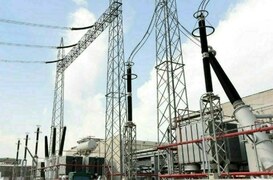Aptma Seeks Transparency on Electricity Tariff Constraints
The All Pakistan Textile Mills Association (Aptma) has urged the government to disclose details regarding the obstacles preventing the removal of peak hour electricity tariffs for the industrial sector.
In a formal communication to Prime Minister Shehbaz Sharif, Aptma Secretary General Shahid Sattar mentioned that the current electricity tariff, ranging from 10 to 11 cents/kWh, remains higher than the regionally competitive rate of 9 cents/kWh, despite some headway.
According to Sattar, competing economies provide electricity at rates between 5 and 9 cents/kWh, which places Pakistan’s energy-intensive textile industry at a disadvantage. He emphasized that elevated energy costs impede export competitiveness and overall manufacturing expansion.
Time of Use (ToU) Tariff Structure
Sattar suggested that eliminating the Time of Use (ToU) power tariff structure for industrial consumers could further reduce industrial power tariffs. He stated that this approach would be revenue-neutral, as industry is projected to consume approximately 32% more electricity during existing peak hours, as per data from Nepra. This increase would offset any revenue losses resulting from the removal of the higher ToU tariff.
Aptma’s analysis suggests that this adjustment would lower the effective weighted average tariff for industrial consumers from Rs29.48/kWh (10.57 cents/kWh) to Rs28.36/kWh (10.16 cents/kWh), marking a reduction of Rs1.12/kWh. The association posits that heightened electricity consumption would optimize grid utilization, diminish stranded capacity, and potentially decrease the average power purchase price by an additional Rs0.14/kWh. This reduction could then be conveyed to consumers through Quarterly Tariff Adjustments (QTA).
Aptma asserted that the ToU structure is an outdated mechanism implemented when Pakistan faced severe power deficits, necessitating measures to curb peak-hour consumption. However, given the present surplus generation capacity and the contribution of stranded capacity to high tariffs, the continued enforcement of ToU pricing is counterproductive.
Aptma underscored the importance of replacing the ToU structure with a consistent tariff at the off-peak rate to encourage maximum power usage, improve grid efficiency, reduce per-unit expenses, and bolster industrial competitiveness.
The Association has appealed to the government to abolish the ToU structure for industrial consumers and introduce a uniform AS-II tariff, mirroring the existing off-peak rate.
Aptma stated that their team convened with senior Power Division officials on April 18, 2025, to address the matter. During the session, Power Division officials explained that the removal of the peak-hour tariff faces several obstacles, citing system constraints, demand variations, and fuel cost dynamics as pivotal elements.
The Power Division assured Aptma that it would provide the analysis presented, along with granular data on real-time system demand and fuel expenses.
Aptma concluded by stating that they anticipate receiving this information promptly to thoroughly examine it and formulate a viable strategy aimed at diminishing industrial energy costs while simultaneously amplifying demand on the national grid, thereby fostering broader economic progress.



Comments (0)
No comments yet. Be the first to comment!
Leave a Comment